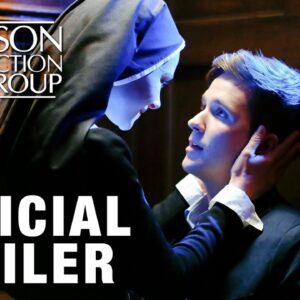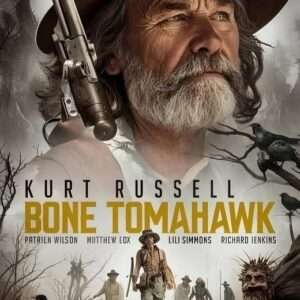The Quake (2018) – A Powerful Sequel That Shakes Both Earth and Heart
Disaster movies have long captured the imaginations of global audiences, often depicting massive destruction, high-stakes survival, and human resilience. Among the gems in this genre is The Quake (original title: Skjelvet), a 2018 Norwegian disaster thriller that serves as a gripping sequel to the critically acclaimed The Wave (2015). While many disaster films rely on spectacle alone, The Quake distinguishes itself with its emotional depth, realistic portrayal of catastrophe, and a human story that grounds the chaos in something very real and relatable.
In this detailed exploration, we’ll delve into the film’s plot, characters, production, themes, and its place in the broader disaster movie genre. We’ll also look at the science behind the story and discuss why this film resonates with viewers far beyond Norway.
1. Background and Sequel Status
The Quake is directed by John Andreas Andersen and written by John Kåre Raake and Harald Rosenløw-Eeg. It follows the events of The Wave, where geologist Kristian Eikjord (played by Kristoffer Joner) heroically saved his family and others during a tsunami triggered by a rockslide in Norway’s Geiranger fjord.
The sequel picks up three years later. Kristian, once a celebrated scientist, is now a shell of his former self. Struggling with post-traumatic stress disorder (PTSD), guilt, and a broken family, he is distant from his wife Idun and their children. The trauma has left deep scars, and he lives a reclusive life, obsessively researching geological patterns.
This background sets the stage for a film that’s not just about surviving a natural disaster, but about the long-term psychological and emotional toll such events can take.
2. Plot Summary
The film begins with Kristian’s colleague Konrad Lindblom, a geologist, dying in a mysterious tunnel collapse. Before his death, Konrad had warned about unusual seismic activity beneath Oslo, suggesting that the city might be in danger of a catastrophic earthquake.
Haunted by the possibility of another disaster, Kristian investigates further. He finds that Konrad had been studying micro-tremors in Oslo and was worried about a massive quake similar to the one that struck the city in 1904. The authorities, however, dismiss Kristian’s warnings, just as they did in The Wave.
As Kristian delves deeper, he uncovers chilling evidence: the tremors are increasing in frequency and intensity. He races against time to warn his estranged family, including his daughter Julia and son Sondre, who are in Oslo. As predicted, a powerful earthquake strikes the city, leading to widespread devastation.
The rest of the movie follows Kristian and his family as they try to survive the destruction. Buildings collapse, chaos reigns, and the tension is palpable. Yet at its core, the story remains intimate and character-driven.

3. Characters and Performances
Kristian Eikjord (Kristoffer Joner)
Kristoffer Joner delivers a powerful performance as the tormented protagonist. His portrayal of PTSD and survivor’s guilt is hauntingly realistic. Unlike many disaster film heroes, Kristian is deeply flawed. He’s not a conventional action hero, but his intelligence, intuition, and love for his family make him deeply compelling.
Idun Karlsen (Ane Dahl Torp)
Idun, Kristian’s wife, is portrayed with emotional nuance by Ane Dahl Torp. She’s trying to move on with her life and protect her children, even as Kristian spirals deeper into obsession. Her arc reflects the real-life challenges of dealing with trauma in a family dynamic.
Julia Eikjord (Edith Haagenrud-Sande)
Kristian and Idun’s daughter Julia plays a central role in the film’s most intense sequences. Her bond with her father becomes a focal point of emotional tension, particularly during the climax when the quake hits.
Sondre Eikjord (Jonas Hoff Oftebro)
The teenage son Sondre has grown since the events of The Wave, and while his role is smaller, it reflects the fractured nature of the family. His presence adds depth to the stakes involved.
4. Cinematography and Special Effects
One of The Quake‘s most remarkable aspects is its cinematography and visual effects. The film was shot in Oslo, and the production team used a mix of practical effects and CGI to create realistic destruction sequences.
The earthquake scene is particularly intense. The moment the ground starts to tremble, the audience is thrown into a whirlwind of falling glass, crumbling skyscrapers, and desperate people trying to escape. The camera work is immersive, often sticking close to the characters to create a sense of claustrophobia and urgency.
What makes it stand out is its realism. Unlike Hollywood disaster films that often exaggerate destruction to cartoonish levels, The Quake maintains a believable tone. The city doesn’t explode in fireballs or split in half. Instead, buildings shake, crack, and collapse in terrifyingly plausible ways.
5. Realism and Scientific Basis
The premise of The Quake is not far-fetched. Norway does have a history of seismic activity. In fact, the 1904 Oslo earthquake, which registered 5.4 on the Richter scale, serves as a reference point in the film.
While Norway is not commonly associated with earthquakes, the Scandinavian region lies on a stable tectonic plate, but intraplate earthquakes can and do occur. The film’s suggestion that a major quake could strike a heavily populated city like Oslo is not outlandish. In fact, part of the film’s success lies in tapping into this underexplored vulnerability.
Furthermore, the film treats science with a degree of respect not often seen in disaster movies. Kristian’s investigation is methodical, and the film shows how difficult it is to predict quakes and convince authorities of impending danger.
At the heart of The Quake is the idea that disasters are not just momentary events — they have long-term consequences. Kristian is haunted not only by what happened but by what might happen again. His mental health struggles reflect the psychological cost of heroism.
The film also explores the fragility of human relationships in the face of disaster. Idun’s attempts to build a new life, Julia’s innocence, and Kristian’s desperation all serve to underscore how disasters affect families, not just cities.
Another recurring theme is the human tendency to ignore warnings. This echoes the first film, where Kristian was ignored until it was too late. The sequel drives home the idea that humanity often fails to learn from past mistakes — a timely message in an age of increasing natural disasters and climate change denial.
The Quake was well-received in Norway and performed solidly at the box office. It also gained international attention, especially in countries with a strong interest in disaster films.
Critics praised the film’s realistic approach, strong performances, and emotional depth. While it didn’t have the massive budget of Hollywood productions, many felt it outclassed them in terms of storytelling and character development.
The film also opened a dialogue in Norway about preparedness and seismic safety. While not a documentary, its depiction of how unprepared cities can be sparked conversation among audiences and experts alike.
When compared to American disaster blockbusters like San Andreas (2015) or 2012 (2009), The Quake is notably more grounded. Where the Hollywood approach often emphasizes spectacle and action, The Quake leans into emotion, tension, and psychological realism.
The closest comparison might be Japan’s Shin Godzilla (2016), which also used a national disaster metaphor to explore bureaucratic paralysis and scientific urgency.
However, The Quake stands on its own due to its unique setting, personal narrative, and Scandinavian sensibility — one that balances stoicism with intense feeling.
The final 30 minutes of The Quake are some of the most intense in any disaster movie. When the earthquake hits, the camera follows Julia and Kristian inside a crumbling skyscraper. The building collapses piece by piece in a terrifyingly slow-motion sequence. It’s not just a visual spectacle — it’s a test of will, love, and survival.
Kristian’s attempt to save Julia is heart-wrenching. Injured, suffocating under debris, and almost hopeless, the sequence offers not only suspense but also catharsis. The father-daughter bond is reaffirmed in the face of death, and the final moments are a testament to human endurance.





